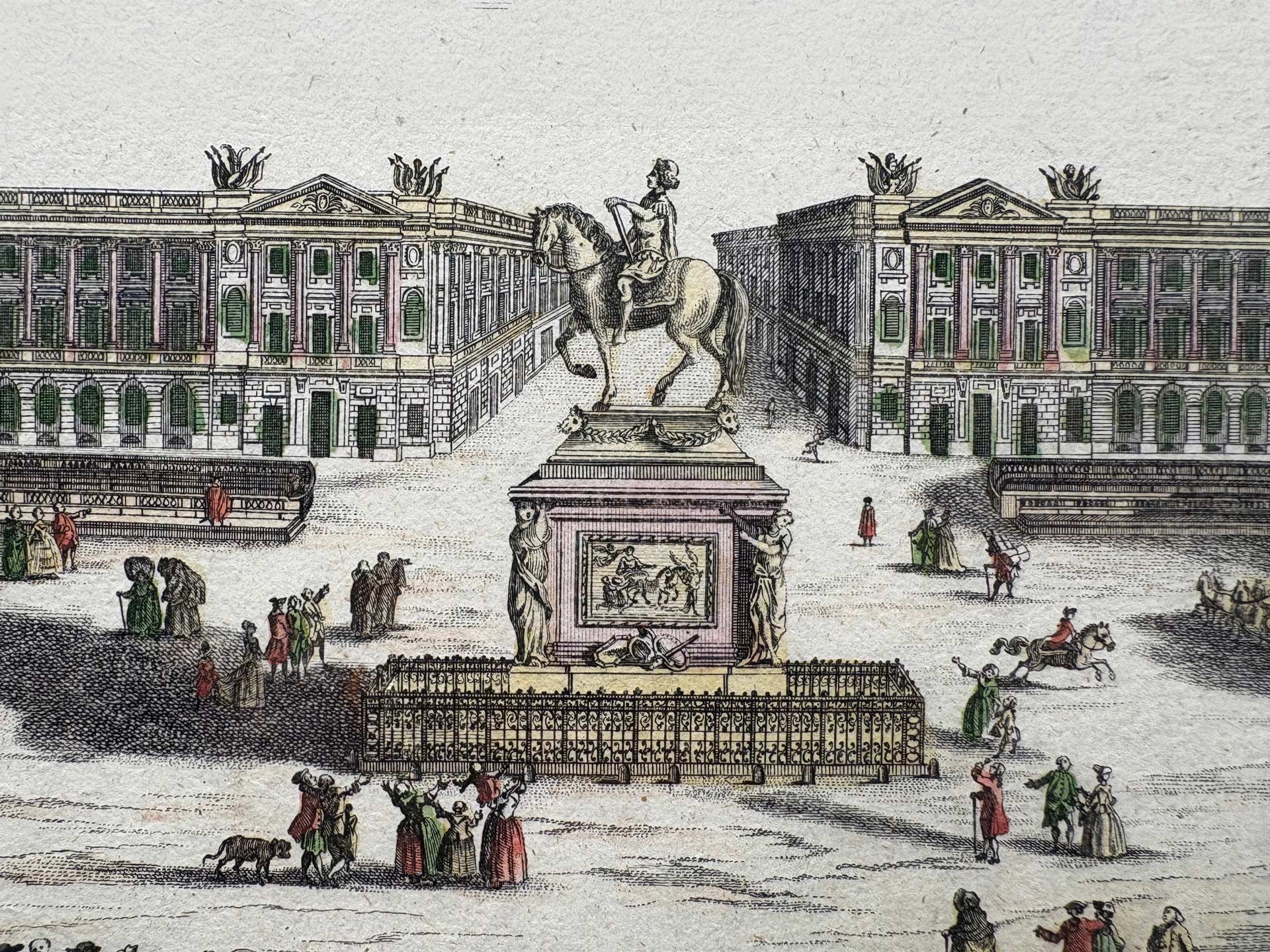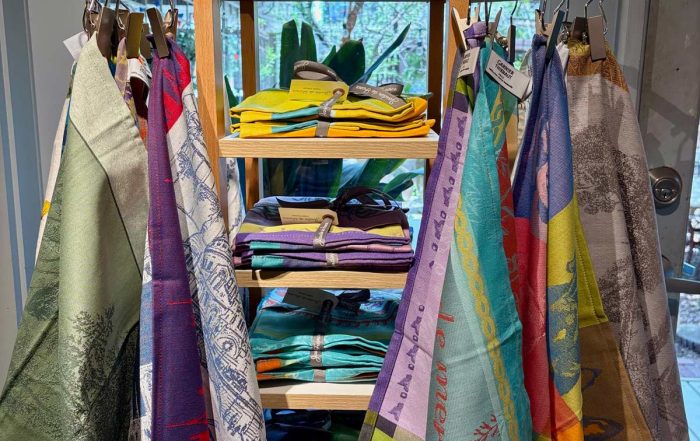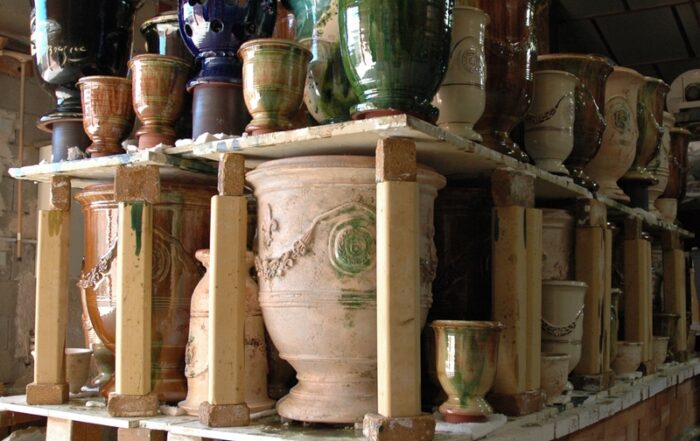Today’s Featured Art – a Louis XV Antique Engraved Print
I want to showcase an antique print we have at our Houston shop. Between its subject and its provenance, this fine work of art truly deserves a spotlight.
First, a Quick History on its Subject
The print is a colored engraving that depicts an equestrian statue of King Louis XV in the center of the Parisian square with his namesake – Place de Louis XV le Bien-Aime. Completed in the 1760s, it was originally named after him to honor his reign (1715-1774), but after the French Revolution, the square was renamed Place de la Concorde.
Today, in addition to being the largest square in Paris, Place de la Concorde is most well-known for housing the iconic Obelisk of Luxor. King Louis XV’s equestrian statue was taken down during the French Revolution, and the Obelisk was erected in the same spot in 1836.
What to Know about Antique Prints
Antique engravings and etchings (part of the intaglio printing family of art) are made from a master plate. The original art design is engraved with a metal stylus into a copper plate. That plate is then inked, and the excess ink is wiped away, leaving ink only in the engraved lines.
Next, a sheet of paper is placed over the inked plate, and both are run through a high-pressure roller press. The pressure forces the paper into the recessed lines so the ink transfers, and the image is printed onto the paper.
That pressure also results in the engraved master plate leaving a characteristic “plate mark” impression around the edges of the paper.
Why the Plate Mark is Important
The presence of a plate mark authenticates a print as a unique piece of art original to the time period of its master plate. Our print has its plate mark, and it too comes from the period of the original engraving – likely the late 1700s before the French Revolution when Louis XV was still popular.
The Backwards Text
The backwards text across the top of the print is the final piece affirming its authentication to the period, and really gives it a wow factor.
The reason it’s backwards is this is a vue d’optique print, designed to be viewed with a zograscope. Zograscopes are a special optical device that house a large convex lens. When a vue d’optique print is viewed with a zograscope, the image presents itself reversed, correcting the text direction, and making the scene more immersive and three-dimensional to the viewer.
Vue d’optique prints, typically portraying historical or well-known cityscapes, were common in the late 18th and early 19th centuries, and viewing them with a zograscope was a popular past-time of the era.
Le Conclusion
It’s just one more reason why this incredibly unique piece deserves a spot in your home. It’s framed and ready to hang. Come stop by, say bonjour, and shop all of our artwork for yourself!
Tuesday-Saturday
10am-5pm
À bientôt!
Sign up to hear about upcoming events at all of our locations, from exclusive container first-looks to Saturday sip & shops.















